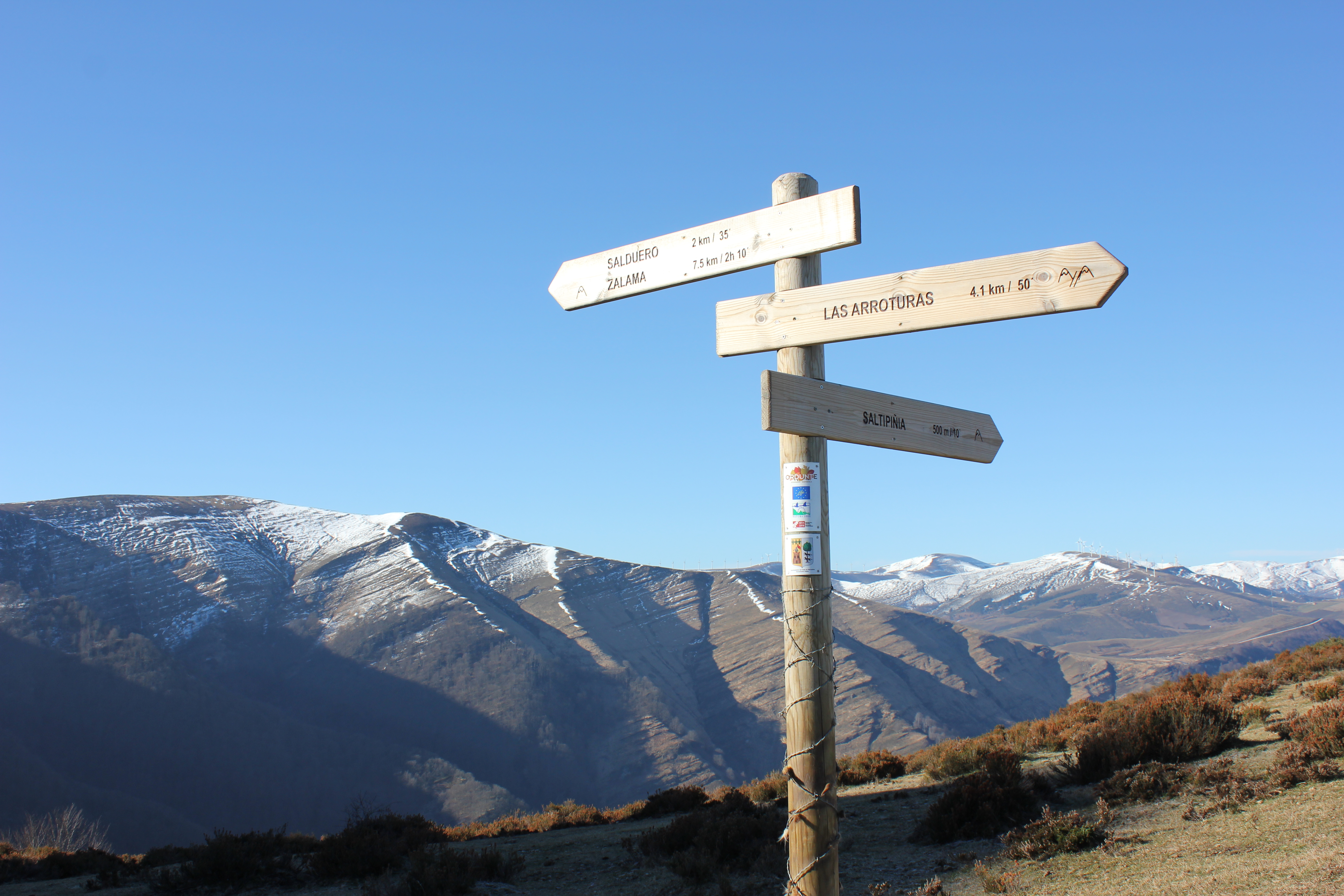Basque ethnography at a glance

Signpost on the ascent to Llana de Salduero in the Valley of Carranza. Luis Manuel Peña. Labayru Fundazioa Photographic Archive.
Place names are like an invisible coat that covers the territory we inhabit, Barandiaran wrote. Several layers overlap the landscape, as many as readings we could give of it: the geologist is capable of analysing its innermost essence, that which holds all others in place; the botanist gives account of ground-cover vegetation; the geographer is able to provide an interpretation by which the work of humans is brought to the surface; and the prehistorian attempts to decipher the remains of our forebears of long ago. Against this background, what is the task of the ethnographer? Namely, to learn the language of human activity, the ways of life and their impact, and interpret it in light of the testimonies of the people who live and work in the region under study. Through fieldwork with the local community, even more so when it concerns the study of rural environments, and more particularly mountain areas, the ethnographer uncovers place names that could only have been anchored in the surroundings by informants who actually use them and inherited them from ancestors who lived on the land before. Not to mention, of course, the major role of the linguist, who gathers names of geographical locations from the mouths of folks who employ them.

Detail of the signpost indicating the direction to Las Arreturas, not Arroturas. Luis Manuel Peña. Labayru Fundazioa Photographic Archive.
Unlike the aforementioned covers, more or less discernible depending on the interpreter’s ability to observe, the top layer that stretches upon them all is not visible, as we say, its transmission and use being purely oral by tradition. This is still more noticeable in the communal lands up in the mountain, where the work of scribes, notaries and property registrars has hardly reached and the different administrations have exerted weaker control —more often than not all outsiders—.
Our mountains are emptied of woodcutters, charcoal makers and shepherds. New occupants with a variety of sporting and touristic interests have arrived, then it is necessary to guide them around a setting that offers the charm of fascination for discovery. This is when oral tradition becomes part of the written culture, take the signposts that proliferate in the mountains as instances of such transition. Sometimes, though, we find that those who stand as custodians of the new culture regard farmers as rather unreliable, thinking perhaps that a farmer’s voice is quite ephemeral or not conscious that the natural state of a language is dialectal, and thus estimate their way to name places is inaccurate. Those of us who dedicate ourselves to register change with an ethnographic vision take advantage of modern digital technologies to record the process and share it with anyone wishing to hear, read or see us on the social networks.
Luis Manuel Peña – Ethnography Department – Labayru Fundazioa
Translated by Jaione Bilbao – Language Department – Labayru Fundazioa

